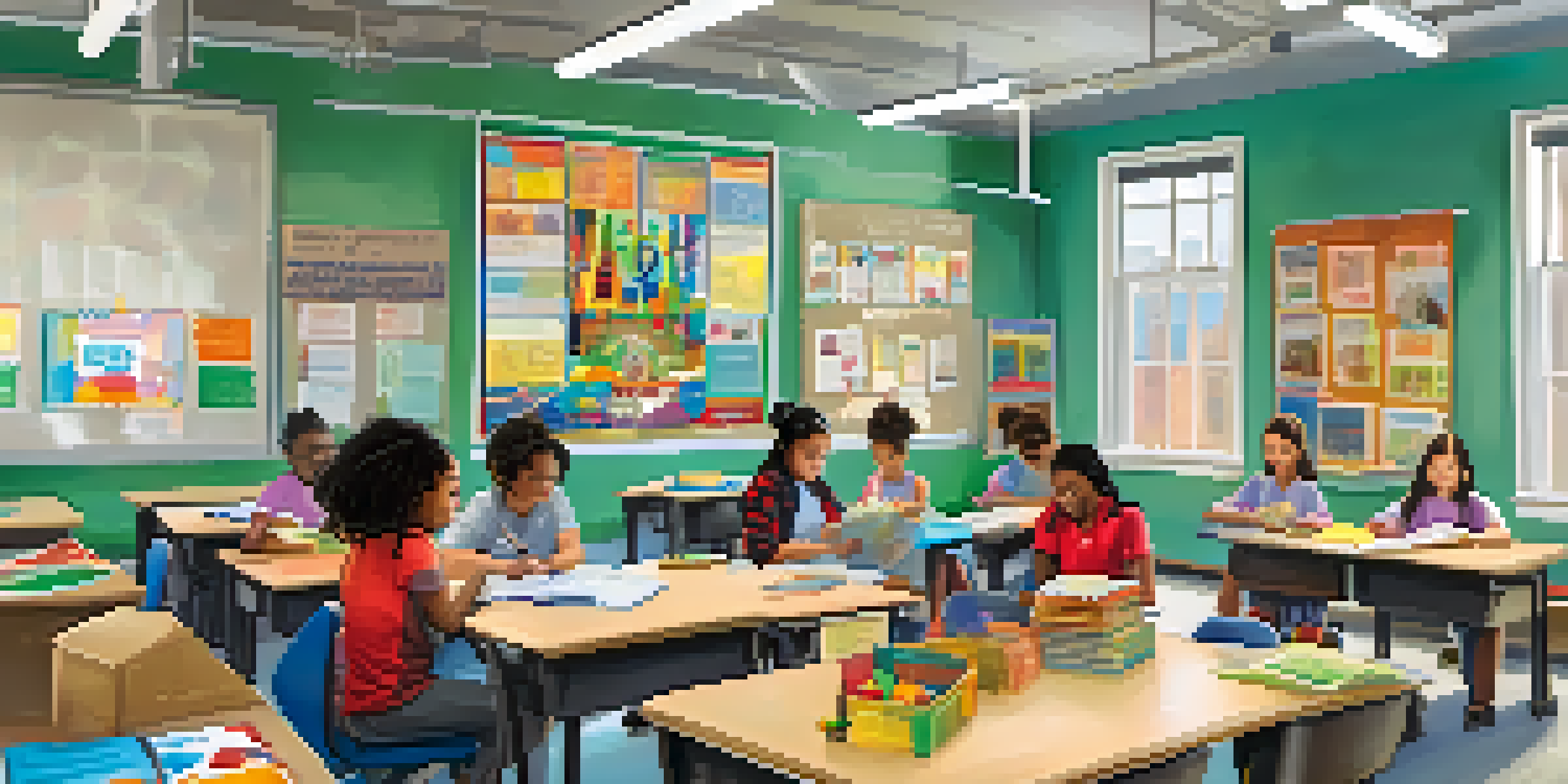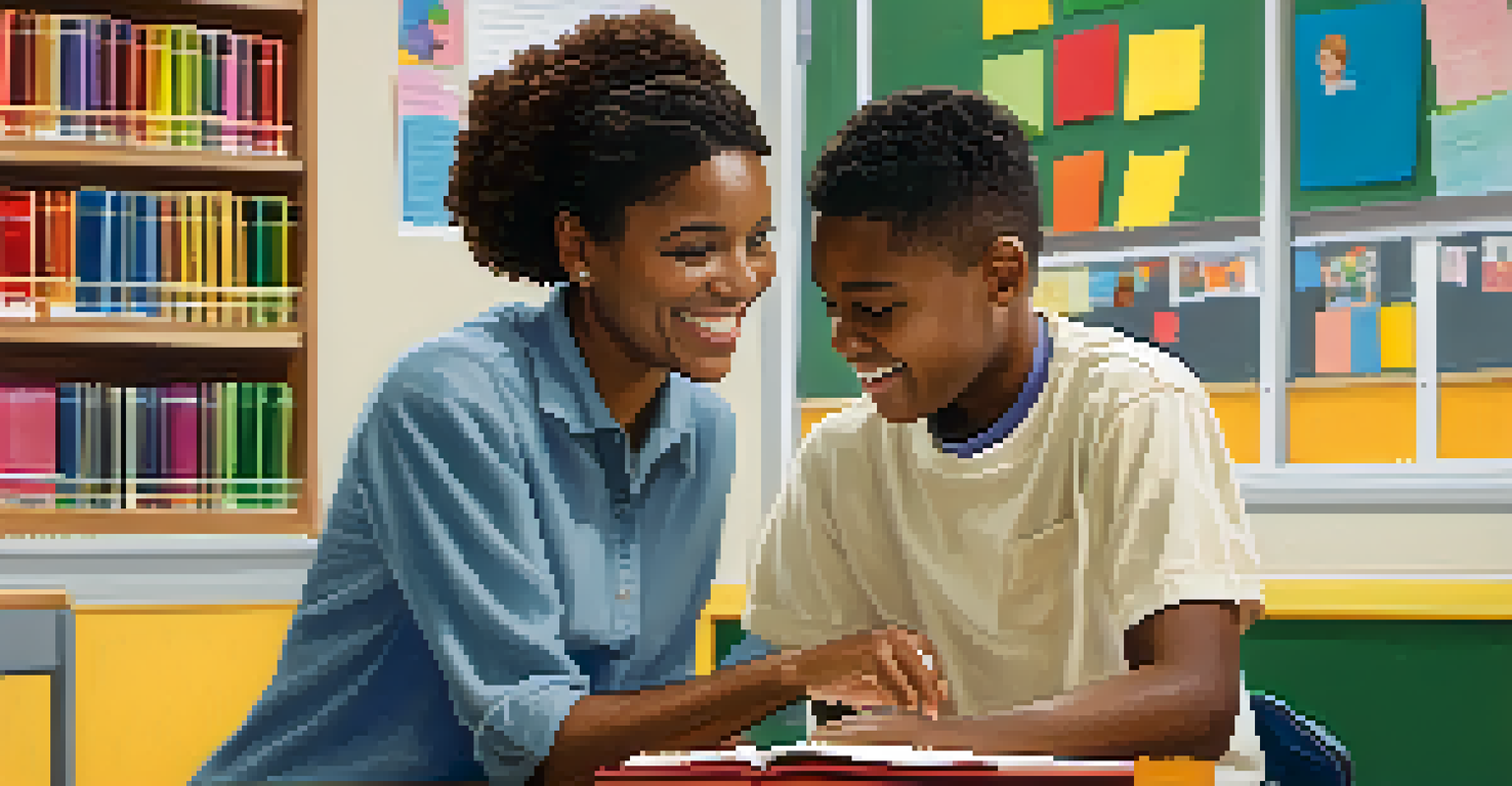Creating Inclusive Classrooms with Behaviorist Strategies

Understanding Inclusive Classrooms and Their Importance
Inclusive classrooms are designed to support students of all backgrounds, abilities, and needs, ensuring that everyone feels welcome and valued. This approach not only enhances the learning experience for students with disabilities but also benefits their peers by promoting diversity and empathy. By cultivating an environment where every student can thrive, educators play a crucial role in preparing them for a diverse world.
Inclusion is not a matter of political correctness. It is the key to the future of our children.
Inclusion is more than just placing students with disabilities in general education settings; it's about actively engaging them in meaningful ways. This can involve tailored teaching methods that recognize individual learning differences and foster a sense of belonging. When students see their unique contributions valued, it can lead to increased motivation and academic success.
Ultimately, creating an inclusive classroom environment sets the foundation for positive social interactions and personal growth. It empowers students to embrace their identities while respecting the differences of their classmates. This nurturing atmosphere can significantly impact their emotional well-being and academic performance.
Behaviorism: A Framework for Classroom Management
Behaviorism is a learning theory that focuses on observable behaviors and the ways they're shaped by the environment. In the classroom, behaviorist strategies can be used to reinforce positive behaviors and discourage negative ones through rewards and consequences. This approach is particularly effective in creating structured learning environments where students understand expectations.

By applying behaviorist strategies, teachers can create clear routines and use reinforcement techniques, such as praise or tangible rewards, to motivate students. For instance, a teacher might implement a token system that allows students to earn tokens for demonstrating desired behaviors, which can later be exchanged for privileges or small prizes. This not only encourages good behavior but also fosters a sense of achievement.
Importance of Inclusive Classrooms
Inclusive classrooms enhance learning for all students by fostering diversity and empathy.
Moreover, using behaviorism in classroom management helps establish a consistent environment where students feel safe and supported. When students know what is expected of them and the rewards for meeting those expectations, they are more likely to engage positively with their peers and the curriculum. This structured approach can significantly enhance the overall classroom climate.
Setting Clear Expectations for All Students
One of the cornerstones of inclusive classrooms is setting clear expectations for all students. By clearly communicating behavioral and academic expectations, teachers can help students understand what is required of them. This clarity not only aids in classroom management but also supports students with diverse needs who may benefit from structured guidelines.
The greatest gift you can give your children is your time and attention.
Teachers can use visual aids, checklists, or consistent verbal reminders to reinforce these expectations. For example, a visual schedule outlining daily activities helps all students, especially those with learning disabilities, anticipate transitions and feel more secure in their routine. This proactive strategy minimizes anxiety and promotes engagement.
In addition, involving students in the process of establishing classroom norms can foster a sense of ownership and responsibility. When students contribute to the creation of rules and expectations, they are more likely to adhere to them. This collaborative approach can lead to a more inclusive and respectful environment, where all voices are heard.
Using Reinforcement to Promote Positive Behaviors
Reinforcement is a central tenet of behaviorism, and it plays a vital role in promoting positive behaviors in inclusive classrooms. By recognizing and rewarding desired behaviors, teachers can encourage students to repeat those actions. This can be particularly effective in creating a supportive atmosphere where students feel appreciated and motivated to succeed.
For example, a teacher might implement a 'star system' where students earn stars for demonstrating kindness or participating in class discussions. This not only motivates students to engage positively but also reinforces the idea that their contributions are valued. Over time, this can lead to a more collaborative classroom culture.
Behaviorism in Classroom Management
Applying behaviorist strategies helps teachers create structured environments that reinforce positive behaviors.
It's important to remember that reinforcement should be tailored to individual student needs. Some students may respond better to verbal praise, while others may appreciate tangible rewards. By understanding what motivates each student, teachers can create a more inclusive environment that fosters growth and encourages positive interactions among peers.
Encouraging Peer Interactions Through Group Activities
Group activities can be an effective way to encourage peer interactions and foster inclusivity in the classroom. By working collaboratively, students can learn from one another and develop essential social skills. This interaction not only enhances academic learning but also builds friendships and fosters a sense of community.
Behaviorist strategies can be applied during group activities by establishing clear roles and expectations for each student. For instance, assigning specific tasks within a group can help ensure that everyone participates and contributes. This structure can be particularly beneficial for students who may struggle with social interactions, as it provides them with a clear framework to engage.
Additionally, reflecting on group experiences can help solidify the importance of collaboration and communication. Teachers can facilitate discussions about what worked well and what could be improved, encouraging students to share their thoughts and feelings. This reflective practice not only reinforces positive behaviors but also enhances social awareness and emotional intelligence.
Addressing Challenging Behaviors with Understanding
In every classroom, challenging behaviors may arise, and it’s essential to address them with understanding and empathy. Rather than simply punishing negative behaviors, a behaviorist approach encourages teachers to investigate the underlying causes. By doing so, educators can develop strategies that are effective and supportive.
For instance, a student who frequently disrupts class may be struggling with a specific learning challenge or experiencing personal issues. By taking the time to understand the root of the behavior, teachers can implement tailored interventions that provide the necessary support. This could involve one-on-one check-ins or adjustments to classroom routines.
Ongoing Reflection for Inclusivity
Regular evaluation and adjustment of teaching strategies ensure that the needs of all students are met.
Addressing challenging behaviors through a lens of understanding not only helps the individual student but also promotes a more inclusive environment for all. When students see their peers receiving support rather than punishment, it cultivates empathy and encourages a culture of caring. This approach ultimately contributes to a more harmonious classroom atmosphere.
Evaluating and Adjusting Strategies for Inclusivity
Creating an inclusive classroom is an ongoing process that requires regular evaluation and adjustment of strategies. Teachers should continuously assess the effectiveness of their behaviorist techniques and be open to making changes as needed. This reflective practice ensures that the needs of all students are being met and that the classroom remains a supportive environment.
Feedback from students can be invaluable in this process. By encouraging students to share their thoughts on what strategies work for them and which do not, teachers can gain insights that inform their approach. This collaboration not only empowers students but also fosters a sense of community and trust within the classroom.

Ultimately, being adaptable and responsive to the needs of all students enhances the overall learning experience. As educators strive to create inclusive classrooms, a commitment to ongoing reflection and improvement will ensure that every student has the opportunity to succeed. This dedication to growth fosters a positive and enriching learning environment for everyone.